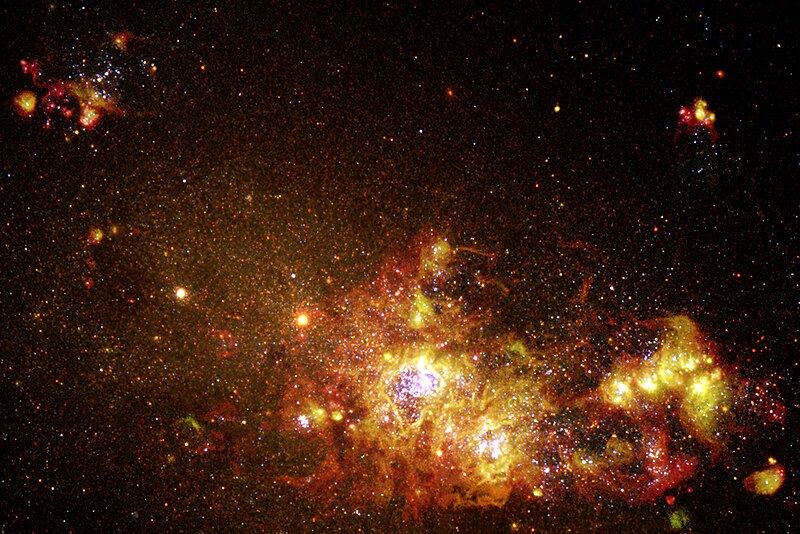Файл:Fireworks of Star Formation Light Up a Galaxy - GPN-2000-000877.jpg
Перейти до навігації
Перейти до пошуку

Розмір при попередньому перегляді: 800 × 534 пікселів. Інші роздільності: 320 × 214 пікселів | 640 × 427 пікселів | 1024 × 683 пікселів | 1280 × 854 пікселів | 1596 × 1065 пікселів.
Повна роздільність (1596 × 1065 пікселів, розмір файлу: 1,67 МБ, MIME-тип: image/jpeg)
Історія файлу
Клацніть на дату/час, щоб переглянути, як тоді виглядав файл.
| Дата/час | Мініатюра | Розмір об'єкта | Користувач | Коментар | |
|---|---|---|---|---|---|
| поточний | 00:41, 9 квітня 2009 |  | 1596 × 1065 (1,67 МБ) | BotMultichillT | {{Information |Description={{en|1=Located some 13 million light-years from Earth, NGC 4214 is currently forming clusters of new stars from its interstellar gas and dust. In this Hubble image, we can see a sequence of steps in the formation and evolution o |
Використання файлу
Така сторінка використовує цей файл:
Глобальне використання файлу
Цей файл використовують такі інші вікі:
- Використання в af.wikipedia.org
- Використання в ar.wikipedia.org
- Використання в ast.wikipedia.org
- Використання в el.wikipedia.org
- Використання в en.wikipedia.org
- Використання в es.wikipedia.org
- Використання в eu.wikipedia.org
- Використання в fr.wikipedia.org
- Використання в hr.wikipedia.org
- Використання в id.wikipedia.org
- Використання в it.wikipedia.org
- Використання в ja.wikipedia.org
- Використання в ko.wikipedia.org
- Використання в lb.wikipedia.org
- Використання в mk.wikipedia.org
- Використання в nl.wikipedia.org
- Використання в no.wikipedia.org
- Використання в pl.wikipedia.org
- Використання в pt.wikipedia.org
- Використання в ro.wikipedia.org
- Використання в si.wikipedia.org
- Використання в sk.wikipedia.org
- Використання в sr.wikipedia.org
- Використання в tr.wikipedia.org
- Використання в vi.wikipedia.org
